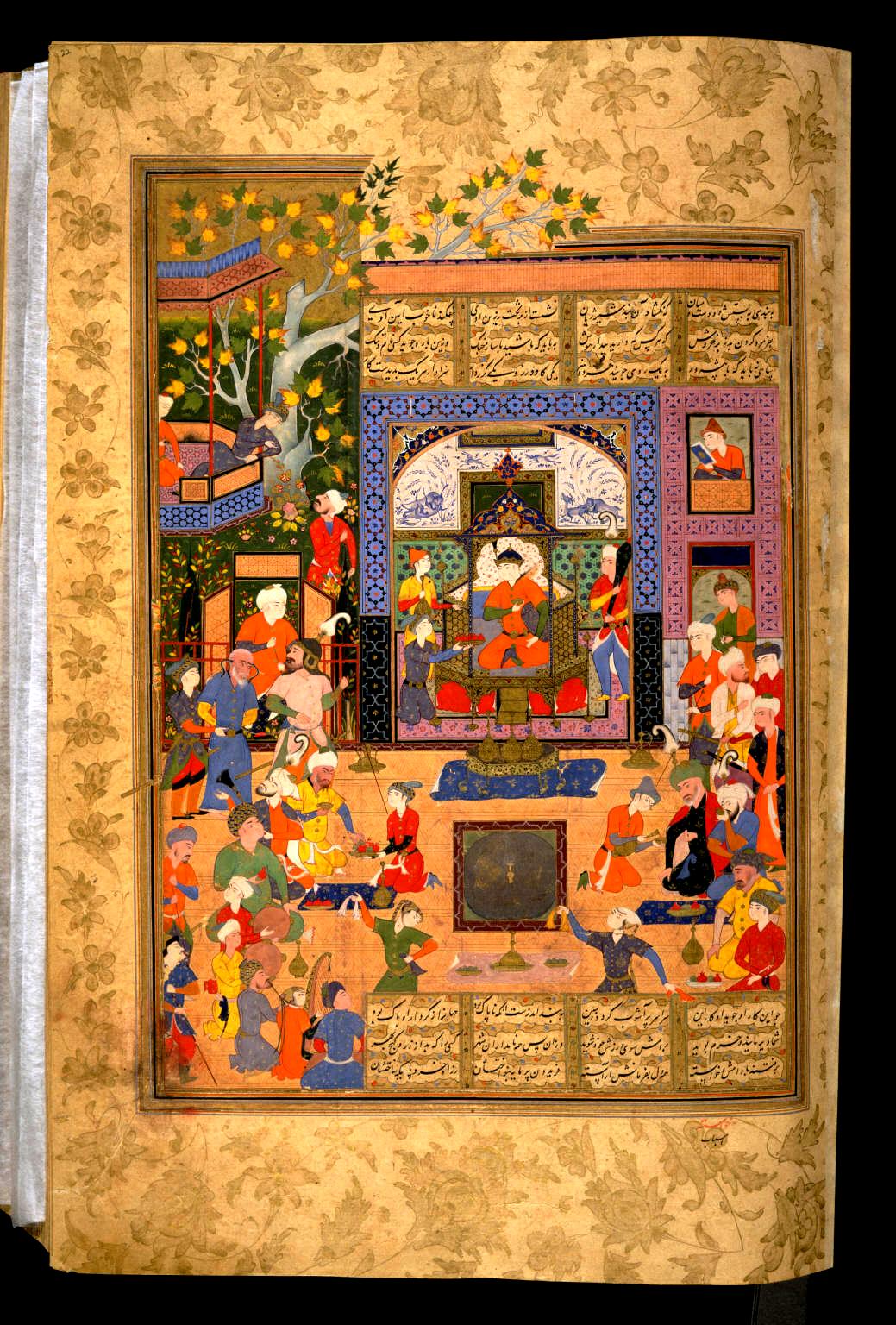Over 1,000 years ago, the Persian poet Abu’l-Qasim Ferdowsi (935-1020) narrated the history of Iran and its peoples - spanning 50 monarchs from the dawn of time to the 7th century A.D. - through gripping tales of ancient triumphs, larger-than-life heroes and grand adventures. Called the Shahnama, or Book of Kings, the epic has been a source of artistic inspiration in Persian culture for centuries and is the most frequently illustrated work of Persian poetry.
Princeton University in New Jersey owns five illustrated versions of the Shahnama, one of which, the Peck Shahnama, named for its donor, ranks among the finest 16th-century Persian manuscripts in the US, due to its impressive size and the quality of its materials and decoration. Having recently undergone conservation treatment, for which the entire manuscript was disbound, the outstanding - though relatively unknown - it is now the centerpiece of an exhibition before the codex is rejoined.
Princeton’s Great Persian Book of Kings - on view at the Princeton University Art Museum from October 3 through January 24, 2016 - features all of the manuscript’s 48 illustrated and illuminated folios and introduces the captivating splendor and art-historical significance of the Peck Shahnama to the public for the first time. The exhibition has been organized to follow the Shahnama’s narrative, structured around mythical, legendary and historical eras, and offers insight into Persian manuscript production and the history of Persian miniature painting, artdaily.com reported.
The Peck Shahnama was bequeathed to the Princeton University Library in 1983 by Clara S. Peck (1896-1983) in honor of her brother, Fremont C. Peck, a member of Princeton’s Class of 1920. She was a horse breeder and collector of rare books and manuscripts with a particular affinity for literature on natural history, sporting, hunting, and equine history. It was doubtless the varied, and often delightful, representations of horses and other animals, polo games, and hunting scenes that attracted her to this deluxe Book of Kings.
“The lasting and universal themes depicted in the magisterial Peck Shahnama remain emphatically relevant and still resonate with individuals and cultures around the world today,” said James Steward, director of the Nancy A. Nasher-David J. Haemisegger, Class of 1976 endowment.
“This beautiful example of Persian miniature painting is a masterwork of literature and art, and Princeton looks forward to bringing more attention to it through this exhibition and publication.”
Illustrated in Shiraz
The Peck Shahnama was illustrated in 1589-1590 in the city of Shiraz in south-central Iran and is an exceptional example of the manuscripts created in that center of learning and culture. Every intricate detail, from the gold-specked paper to the number and content of the illustrated scenes, was conceived in advance by a master book designer.
Shahnama manuscripts trace the vibrant artistic tradition of Persian miniature painting as it developed from late medieval through early modern times. Each deluxe Shahnama is a singular work of art – no two volumes contain the same verses or illustrate the same scenes.
The exhibition is curated by Marianna Shreve Simpson, a specialist in the Islamic arts of the book, who was previously curator of Islamic Near Eastern art at the Freer Gallery of Art and Arthur M. Sackler Gallery, Smithsonian Institution, and director of curatorial affairs and curator of Islamic art at the Walters Art Museum, Baltimore.


